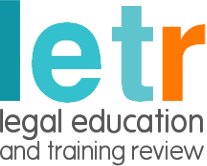Future processes and research
7.75 Richard Susskind (2012) suggested that the LETR itself should be seen as the start rather than the end of a process.
7.76 Many of the developments discussed in this report are at an early stage: the development of ABSs, the trend in employment of paralegals, the impact of the latest legal aid changes, and the effecct of university fees. Whilst it might be suggested that there will be more clarity on these issues in five years’ time, it is equally possible that a further set of currently unforeseen changes will add to the complexity of the picture.
7.77 As Susskind argues, the process needs to move into a more continuing review. The LSB, a number of the approved regulators and the LETR research phase itself have commenced the task of drawing together important information about the sector and its views on change. The gathering of quantitative demographic, diversity and progression data must form a central part of the work of on-going review. Evaluation of ABSs will be necessary as that part of the market takes shape over the next three to five years. More needs to be done to understand the complexities of the paralegal workforce and developments in the unregulated sector, which is difficult to identify and access.
7.78 Useful contributions were received from the LSCP and from in-house lawyers as buyers of legal services, but there was limited consumer engagement in the LETR research phase. Consumers are less likely to have clear views about the content and structure of legal education and training, whereas they will know what they would prefer in terms of service. The consumer perspective on LSET remains underdeveloped, and should be addressed by ensuring consumer representation in the next phase of the LETR itself.
7.79 In support of such continuing review, the report makes a number of recommendations for the creation of tools and locations for collaboration – an information hub, legal education laboratory and data store. These are central, not peripheral, to the rethinking of the role and function of a regulatory body in respect of LSET. This is a model of regulation by design as discussed in the Literature Review.

